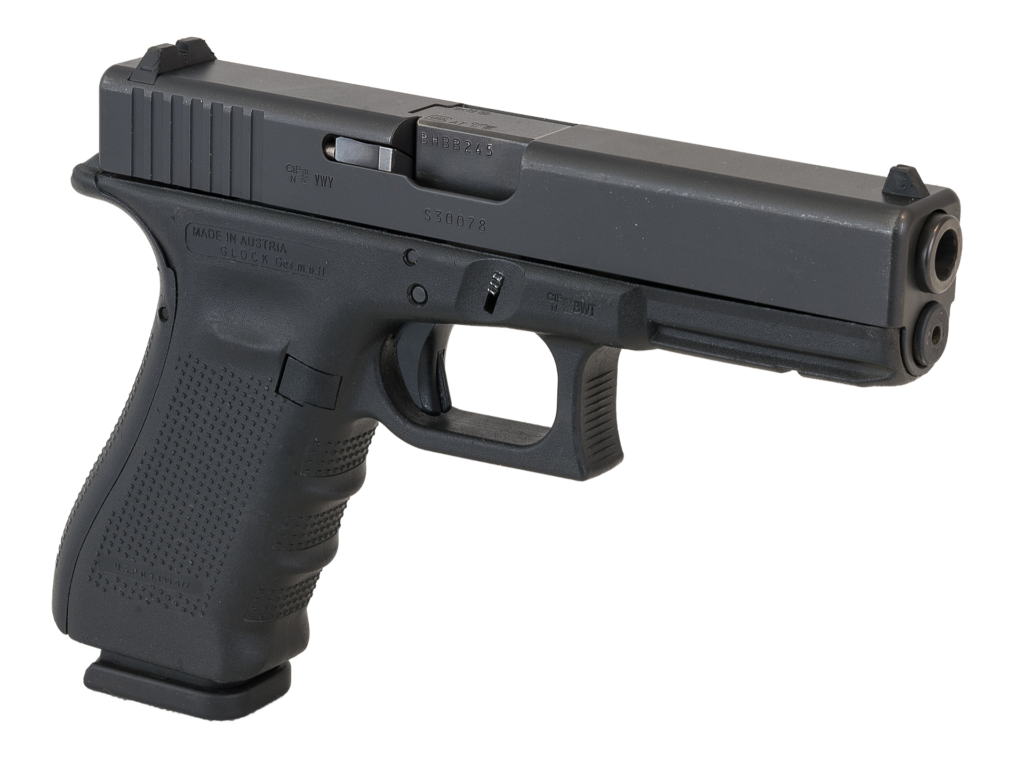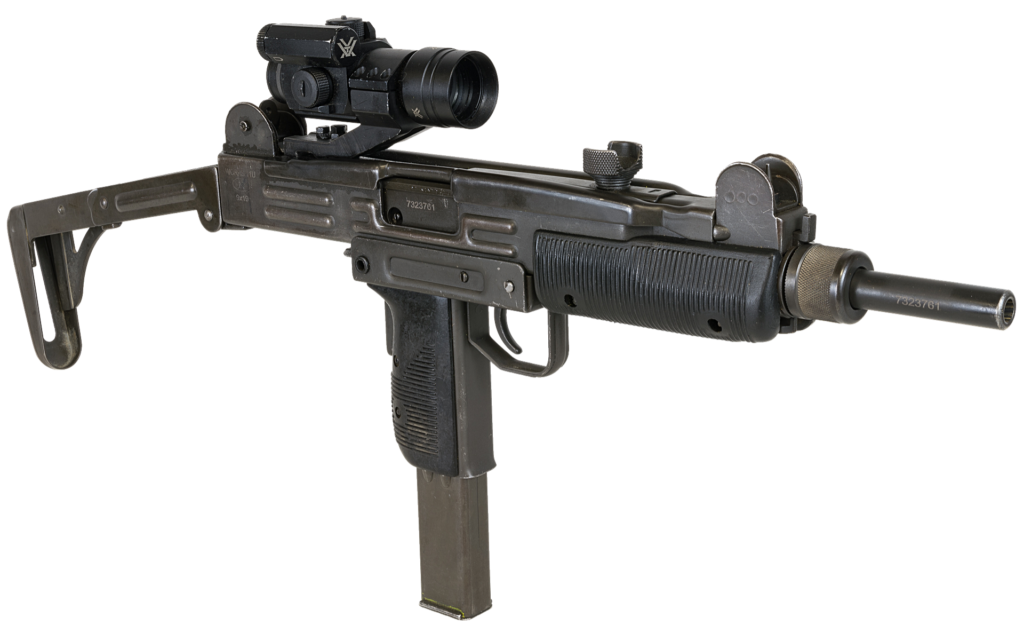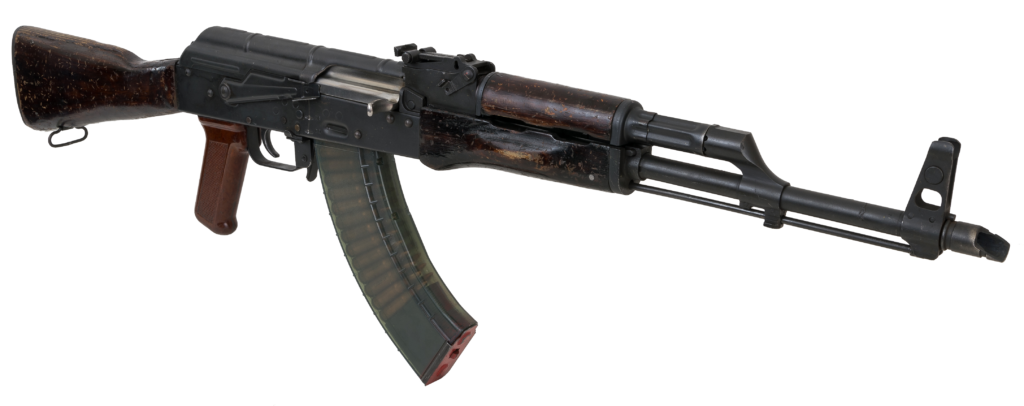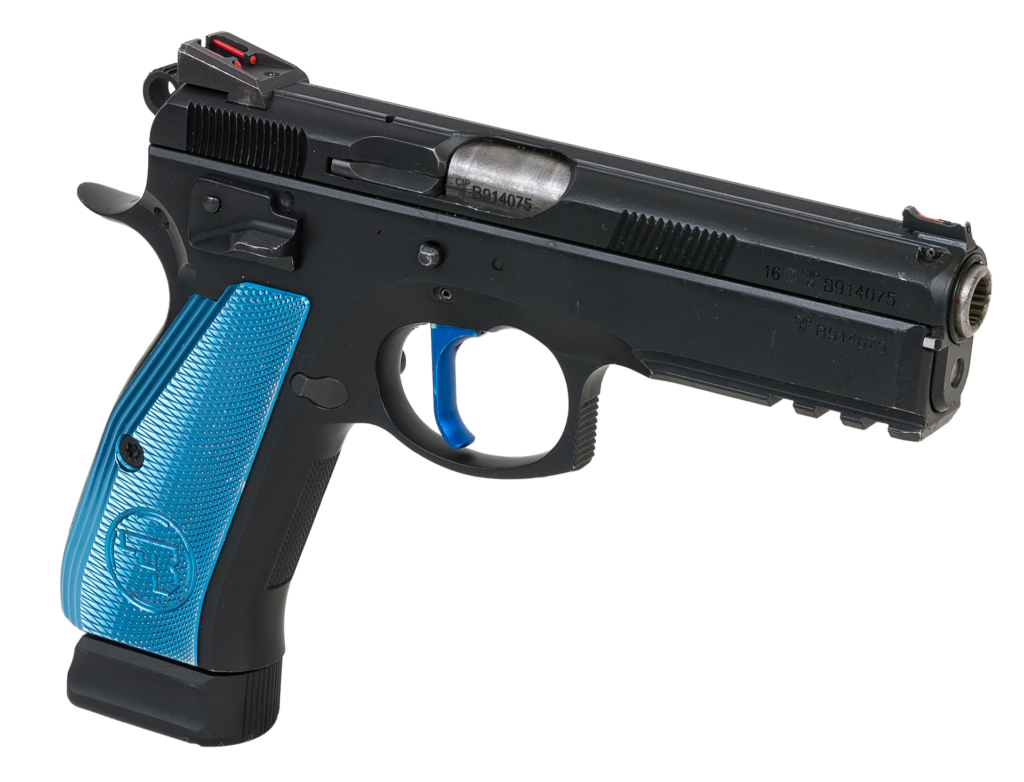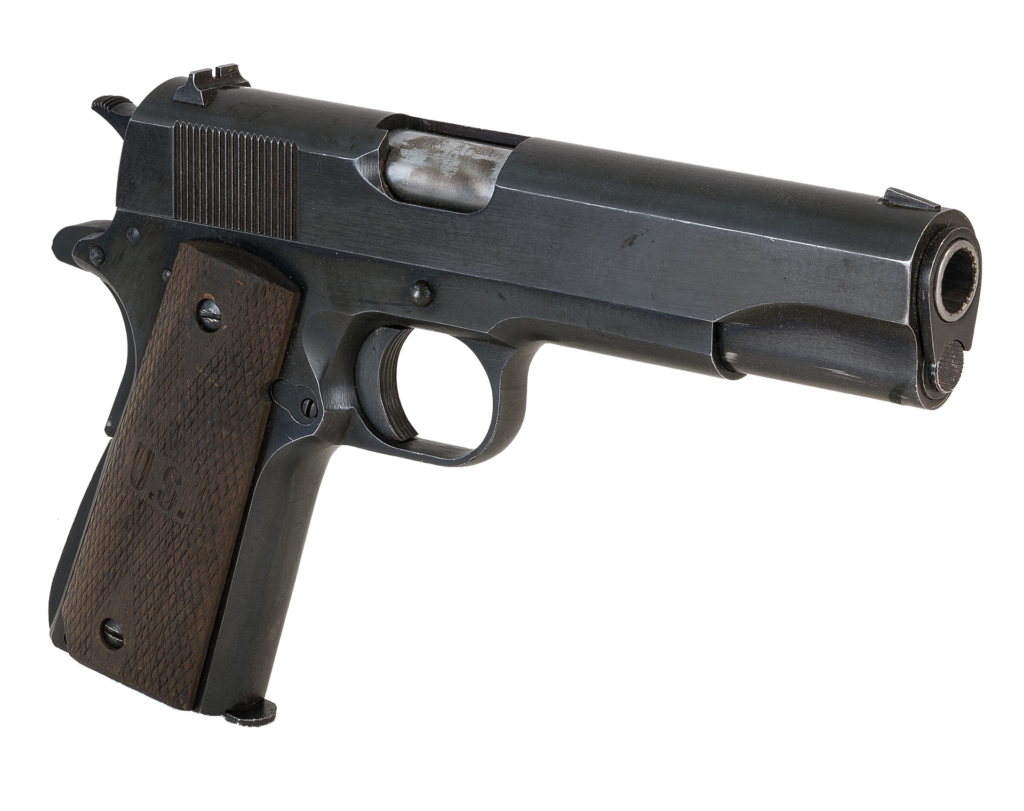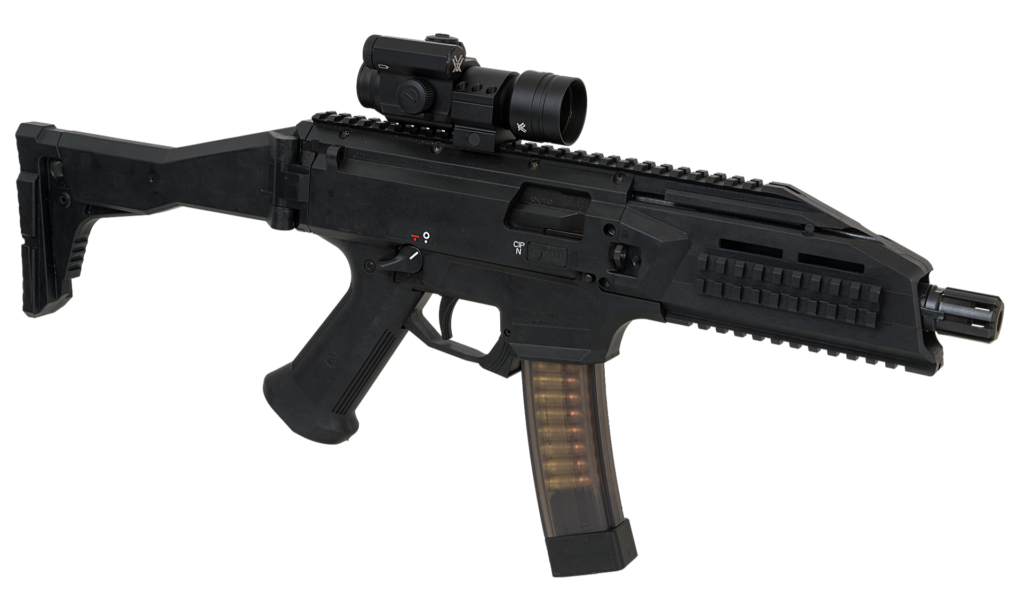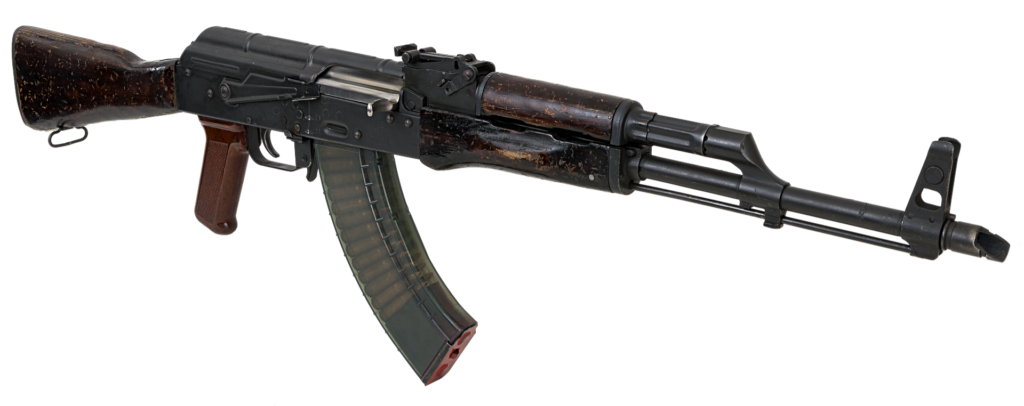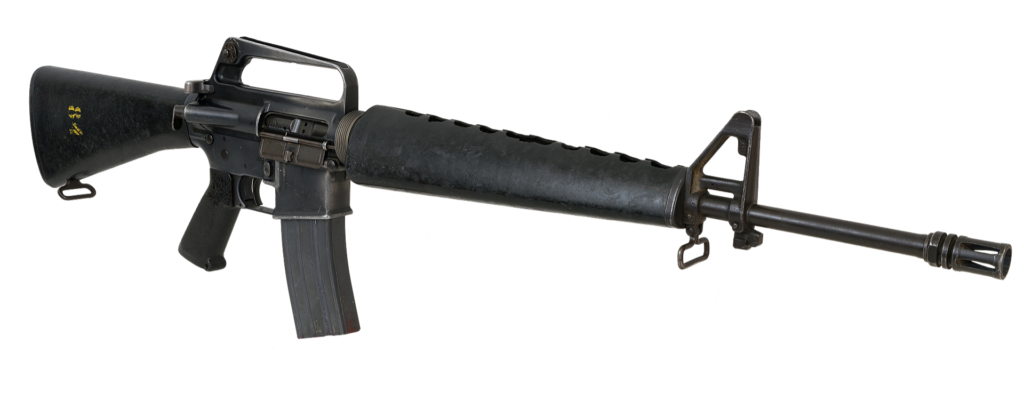As you may know, there are many various types of guns. Overall, except for certain specialized cases, small arms are those whose caliber, i.e. the smallest inner diameter of the barrel, does not exceed 20 mm. In this text we will try to explain what those types are, how they differ and which ones you can try out at the Cracow Shooting Academy.
Pistols
Pistols are guns (theoretically) designed for one-handed shooting, although nowadays, apart from static sport shooting, hardly anyone does that. Most often these are semi-automatic guns (of course there are exceptions), i.e. they are reloading themselves after each shot. Examples are Austrian Glock 17, Czech CZ-75 or Polish VIS or P83.
As the name implies, pistols are fed by pistol ammunition, for example the very common 9×19 mm, .45 ACP (11.43 x 23 mm) or 7.62 x 25 mm. Ammunition is usually fed from interchangeable magazines located in the grip. The CSA’s offer includes, among others, the mentioned Glock 17/19/19X, CZ SP-01/Shadow 2, P83 or Colt 1911, as well as many others, including the famous German P08 Luger.
Revolvers
Revolvers existed long before the semi-auto handguns, but due to their fading popularity, they came in second place. The difference between them and guns is how they work. They are fed from a cartridge cylinder, which fills the role of magazine and chamber in which the cartridge is fired. It is an integral part of the weapon and in the vast majority of cases it is not possible to replace it quickly – it also has a lower capacity, usually 5-8 cartridges.
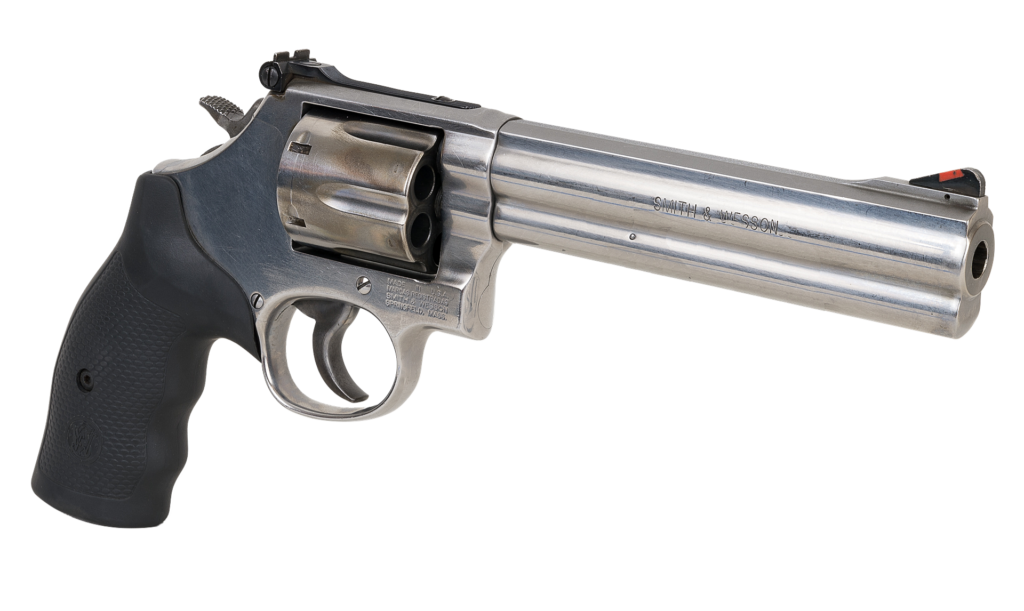
We divide them into two main categories by the way the trigger mechanism works. 55/5000 They are mechanisms of single or double action. 109/5000 In the case of the first one, the hammer that detonates the primer of the cartridge must be cocked before each shot. During this operation, the cartridge cylinder is rotated one position by placing a fresh cartridge in front of the hammer. In the case of revolvers with the double-action trigger, all this happens when you press the trigger without having to cock the hammer yourself. However, this can be done if the shooter wants the trigger pull to be shorter, and thus – aiming was easier.
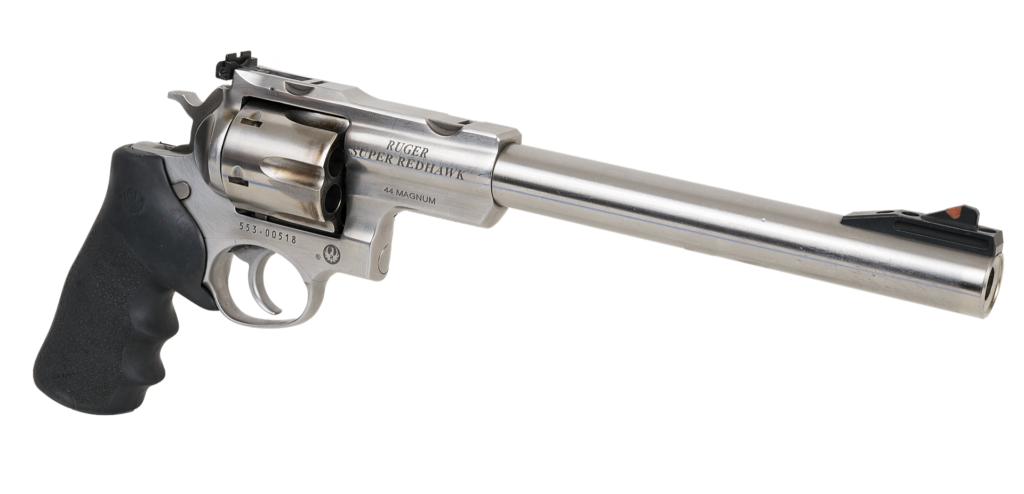
This type of handgun fires cartridges with a special protruding rim, which facilitates the quick removal of casings from the cylinder. Examples of that ammunition are .38 Special/.357 Magnum or .44 Special/.44 Magnum, as well as the mighty .500 S&W Magnum. At our shooting range you can try out (among others) Smith & Wesson 686 revolvers firing the first one and Ruger Super Redhawk shooting the second ammunition.
Submachine guns
Submachine guns are fed with the same type of ammunition as semi-automatic pistols, but they have the ability to fire bursts as long as the shooter squeezes the trigger. Usually (as often with some exceptions – e.g. Glock 18, Beretta 93R, B&T USW) these are firearms equipped with a buttstock and created for shooting braced against the shoulder with both hands on the gun. Their examples include the famous German Heckler & Koch MP5 and MP40, Israeli UZI or Czech Scorpion.
They were created to fight at short distances, in practice up to 50-100 meters. Their usually low weight and dimensions allow for easy maneuvering inside buildings or in vehicles, and for rapid fire thanks to low recoil. The Cracow Shooting Academy’s arsenal includes (among others) the UZI, Scorpion EVO3 S1, Sten or Glock enclosed in CAA RONI conversion which turns it into a kind of hybrid.
Carbines
Jumping a bit higher we encounter assault and semi-automatic carbines. They are the missing link between the SMG and a full-power battle-rifle. They shoot so-called intermediate ammunition, i.e. stronger than pistol, but weaker than rifle ammo (the most popular types are 5.56×45 mm and 7.62×39 mm). This allows for carrying more cartridges and in magazines that can fit more of them, shooting at intermediate distances of up to 500 meters and conducting fast and accurate fire thanks to low recoil.
Examples of assault/automatic carbines include the famous Kalashnikov (AK/AKM/”AK-47″), M/16M4, the Swiss SIG 550 or the German G36. Semi-automatic carbines are simply their civilian versions firing only with single fire. It is important to notice that it’s one of two schools of thought – the second one states that the carbines are just simply shortened rifles. No matter the caliber. The latter ones can be found in our offer – several types of Kalashnikovs and AR-15s, also in precision shooting variants, i.e. created or adapted for shooting at a greater distance by adding special sights and bipods.
Rifles
From the previous paragraph it is easy to deduce what type of small arms rifles are, but let’s clarify. They were created long before the carbines and are fed with full-size rifle ammunition, for example, 7.62×51 mm, 7.62x54R or 8.6×70 mm. Due to its long history, the number of models is huge, as is the number of their types.

There are repeating rifles, i.e. those that need to be manually reloaded after each shot, semi-automatic and automatic/machine guns – the last two types of operation we have already discussed. Repeating rifles are, for example, Mauser Kar98k, Schmidt-Rubin K31, or the Lee-Enfield line. Sniper rifles are usually repeating guns due to their high precision and the small number of moving parts.
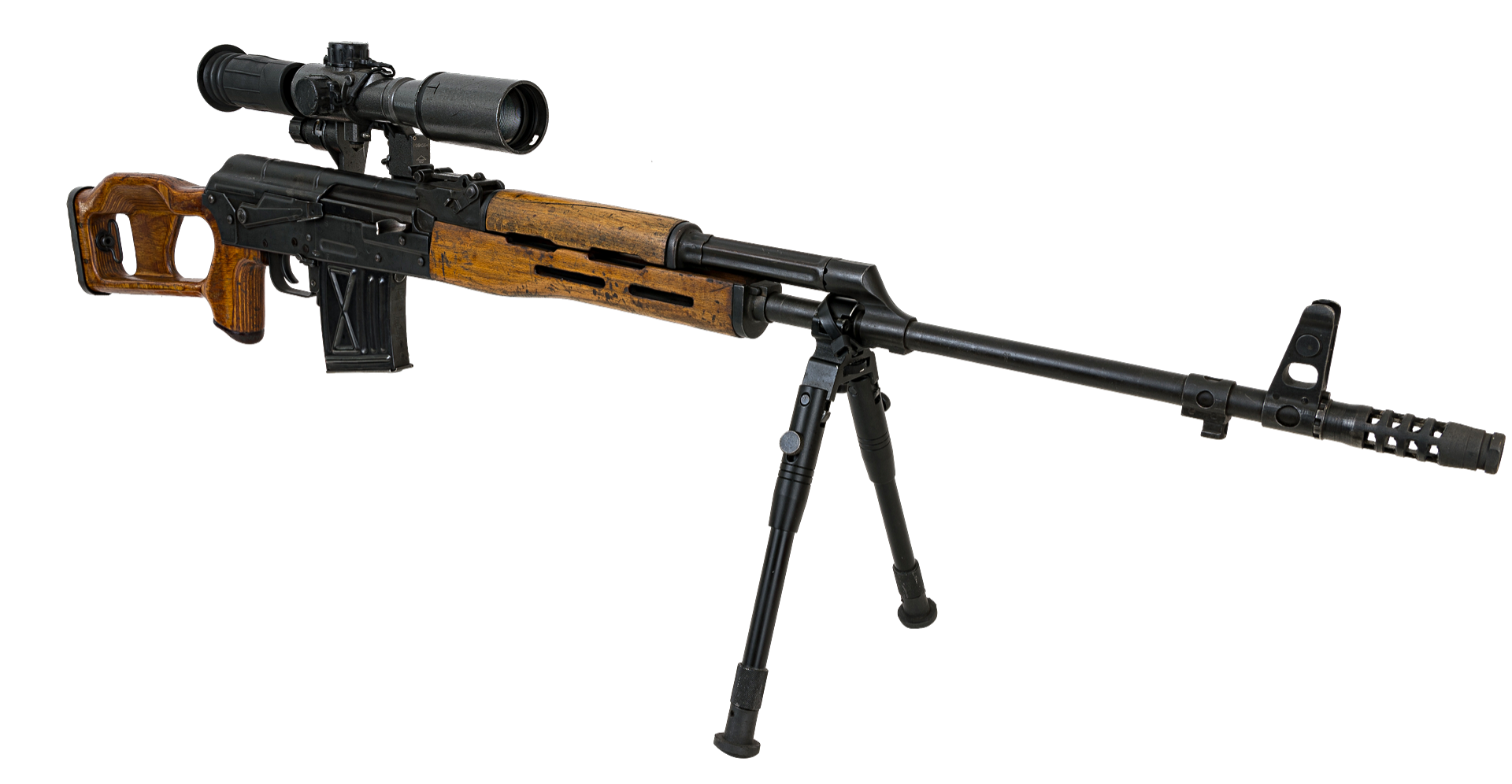
Examples of semi-automatic rifles include the German G3, American M14 and Russian SVD. Models like MG42, M60 or FN MAG are machine guns – most of them can be tested on our shooting range. It should be mentioned that there are also machine guns fed by the intermediate ammo.
Shotguns
Shotguns are a special type of guns, because in most cases they are equipped with barrels without twist that spins the bullet, which stabilizes it in flight. Hence the term “smoothbore shotgun”. This solution was chosen because most types of shotgun ammunition contain shot, i.e. from several to several dozen lead or steel pellets, which makes it easier to hit the target with at least some of them. This type of projectile cannot be stabilized by rotation, and in principle it cannot be stabilized at all. Hence, the distance at which you can hit targets with shotgun pellets is usually less than 50 meters. The range of shotgun ammunition types also includes cartridges containing rubber slugs, tiny arrows, incendiary compound, breaching loads and many more. Therefore, this type of weapon is considered the most universal, despite its limited range.

Shotgun caliber is defined differently than in the case of threaded weapons – here we use the so-called by weight gauge (Gauge/GA), it is determined by the number of balls of a given diameter that can be cast from one pound of lead. Hence the calibers 20GA, 16GA, the most popular 12GA or 10GA. Often the case length is added to the caliber – hence the designation of ammunition such as 12/70 or 12/76.
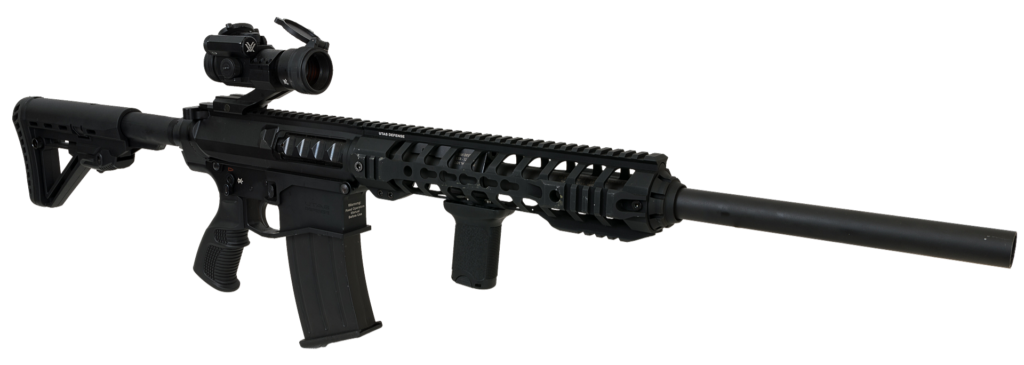
Shotguns are usually fed from tube magazines located directly along the barrel, where the cartridges rest in line ready for loading into the chamber. This reduces the profile of the weapon, because from below there is no removable magazine, but results in a limited capacity rarely exceeding 8 cartridges. It should be noted that due to the size of the ammunition, a 10-round box magazine for a shotgun is much larger than a 30-round magazine for a rifle or carbine. Hence, shotguns with replaceable magazines have never dominated the market, although they have their uses.
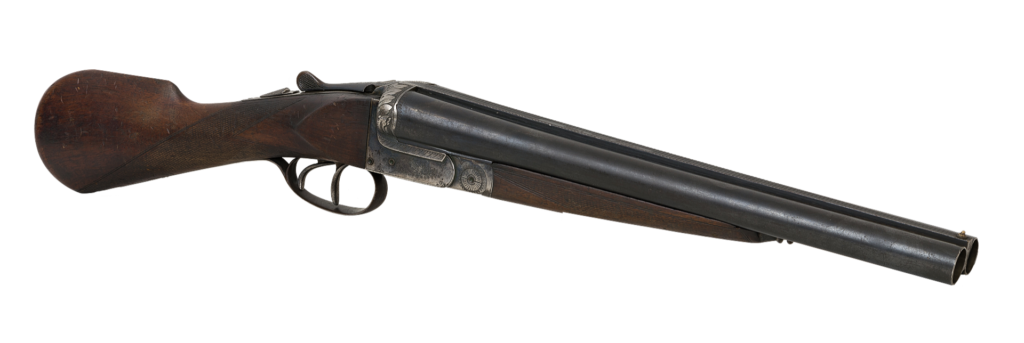
Like other types of weapons, we divide shotguns into repeating, semi-automatic and automatic, with the last ones being very few. Examples of the former can be Mossberg 590A1 or Hatsan Escort, the latter are UTAS Defense XTR-12 or Saiga 12, and the last ones Atchisson AA-12 or Daewoo USAS-12. The first three models can be found at the Cracow Shooting Academy.



